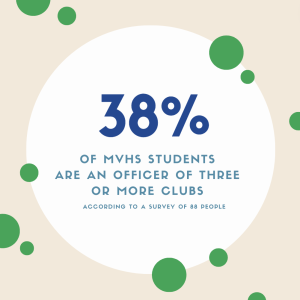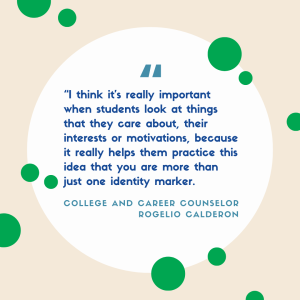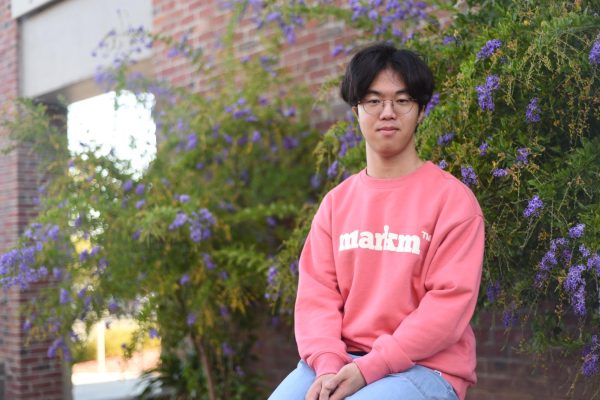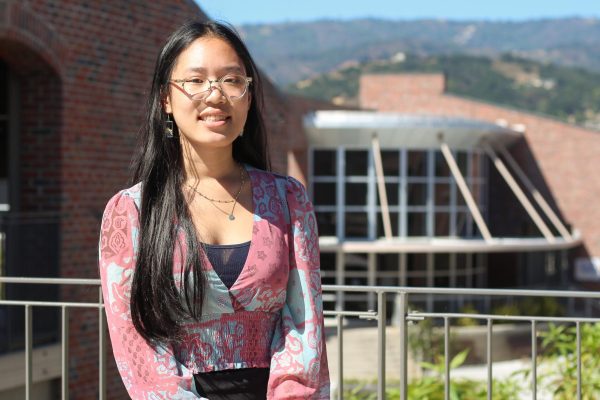When MVHS ‘22 alum Elizabeth Lee first joined MVHS’s literary magazine La Pluma her freshman year, the club was not producing physical copies of its issues consistently. During that time, Lee noticed that many of the officers seemed less invested in the club, as many participated not out of passion, but rather for the ability to put the club on college application resumes. She notes that MVHS students have a culture of cramming extracurriculars, which makes their school life a difficult balancing act.
“It’s not going to be healthy to try to prioritize every single thing that you’re trying to accomplish in your life,” Lee said. “I absolutely don’t think it’s any fault of theirs.”
According to Lee, from her experience in La Pluma, when a student is a part of many clubs, they become less involved in some of them. College and Career Counselor Rogelio Calderon estimates that MVHS students typically have four or more extracurriculars, but finds that large amounts of extracurriculars are often overshadowed by the stress of juggling limited time and resources.
“Your extracurriculars become what’s called diminishing returns,” Calderon said. “When including too many or being involved in too many activities, the quality and all of those activities will diminish.”
Lee experienced firsthand the MVHS culture of aiming to join as many extracurriculars as possible. When she first started high school, she joined multiple activities, such as water polo, an internship at a magazine, local advocacy, Model United Nations and La Pluma, despite not having any interest in some of them like Model UN.
“I definitely fell into that thing of like, it’s just a mad dash to whoever can get the most stuff on their resumes,” Lee said. “But I think as I progressed through high school, I kind of just got tired of it. I naturally started to prioritize the things that I actually enjoyed.”
Lee later joined the officer team her senior year as the Lead Selections Editor and PR Manager alongside MVHS ‘22 alum Manasi Ganti who was the Editor-In-Chief at the time. Seeing the decline of the club in previous years, the 2021-22 officer team made a number of changes to the way the magazine was run. Lee views La Pluma very much as a passion project, naming it as one of the activities that allowed her to step away from the MVHS culture of rushing for quantity and explore her interest in the arts. Senior Sudhanva Deshpande has also noticed a recent shift to more cultural and creative clubs being created on campus.
“We see a lot of STEM clubs that are created or STEM clubs that apply: CS, sciences, math, and more. But we’re also starting to see a lot of cultural clubs or music clubs are starting to apply and be accepted,” Deshpande said. “This season, we, for example, had the Filipino Student Union getting created and we had a dance club, so new clubs like that, which are not just STEM oriented but also cultural.”
He notes that a reason many clubs stop their operation is due to a lack of interest, shown through insufficient amounts of meetings, members or otherwise, hence making clubs with new focuses more successful due to their unique offerings.
“Creating a new community is one of the main things that makes a club successful because creating a new community means that you have a lot of people already interested,” Deshpande said. “Sometimes the presidents or the officers are just not the right people to run the club. Later in the years, someone else comes along, and the club itself is a good idea.”
Deshpande sees over 30 clubs proposed each year, with only 10 to 13 accepted. Self-run extracurriculars are something that Calderon often sees in MVHS students, although he finds that admissions officers often are able to see through ones that are simply for the sake of padding out a resume. He says quality, shown through dedication, perseverance, community impact and otherwise, matters more than quantity, which can be a biased measurement.
“There’s a reason why colleges aren’t saying, ‘We want you to have 10 extracurriculars,’” Calderon says. “Because they know students have different responsibilities. They really care more about the quality, and so I do think sometimes students forget that and they think I need to have all 20 spaces filled up on the application for that.”
Calderon finds students who aren’t guided by their college applications to be compelling due to their authenticity shining through in their extracurriculars even if they don’t necessarily relate to any future paths. In his experience, extreme focus on academic extracurriculars is more stressful than it is successful for students.
“I think it’s really important when students look at things that they care about, their interests or motivations, because it really helps them practice this idea that you are more than just one identity marker,” Calderon said. “You are your whole self that has different parts of you that make up who you are.”
Calderon finds that a student’s ability to identify who they are beyond work or school is a life skill that translates beyond college and into their adult lives. Lee found a similar joy through her work in La Pluma, especially during the pandemic. The isolation and stress resulted in her not having the mental capacity to handle the things she did not enjoy. She found herself reflecting on her own priorities and what would make her happy in such a stressful time, ultimately leading her towards her passions, such as writing.
“There’s this feeling of ‘the more you start to do things that you enjoy, the more happy you are,’” Lee said. “Not only with the things that you’ve accomplished, but with your own self image.”












